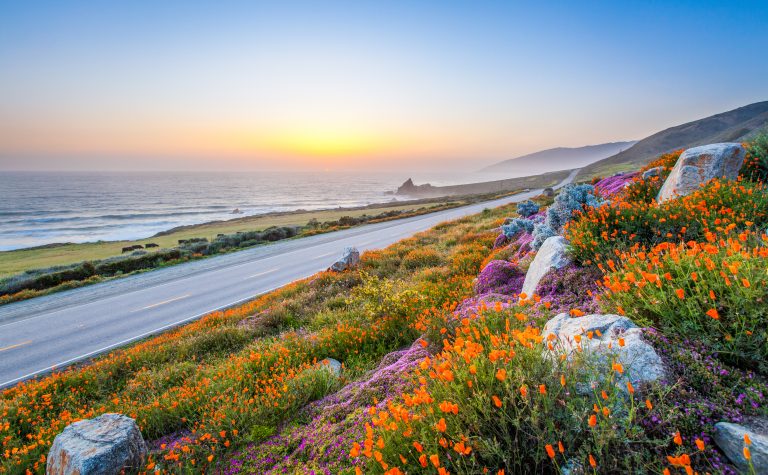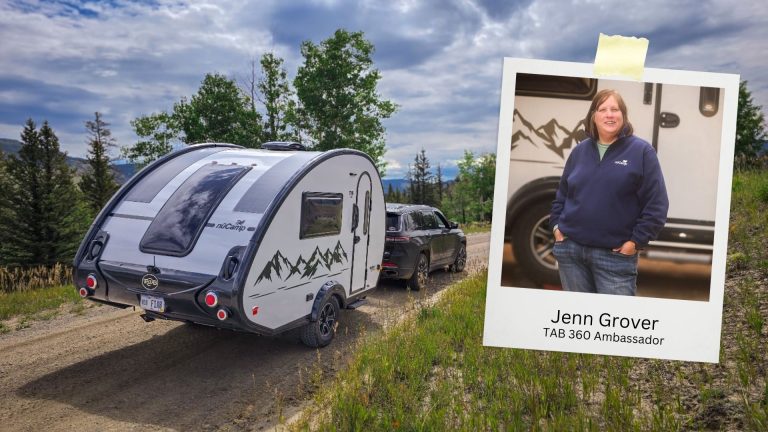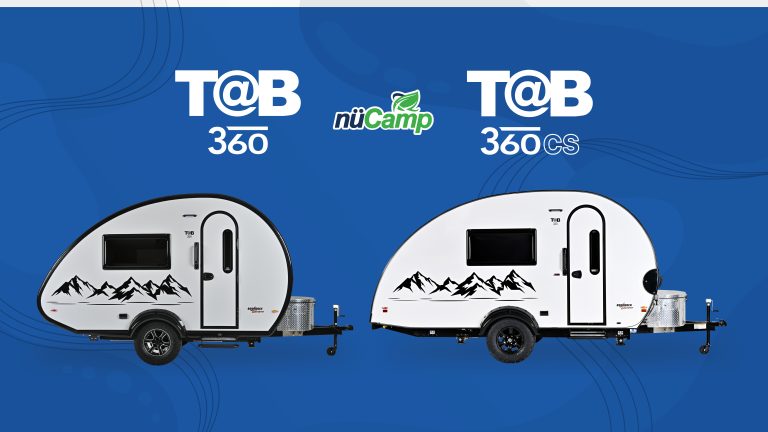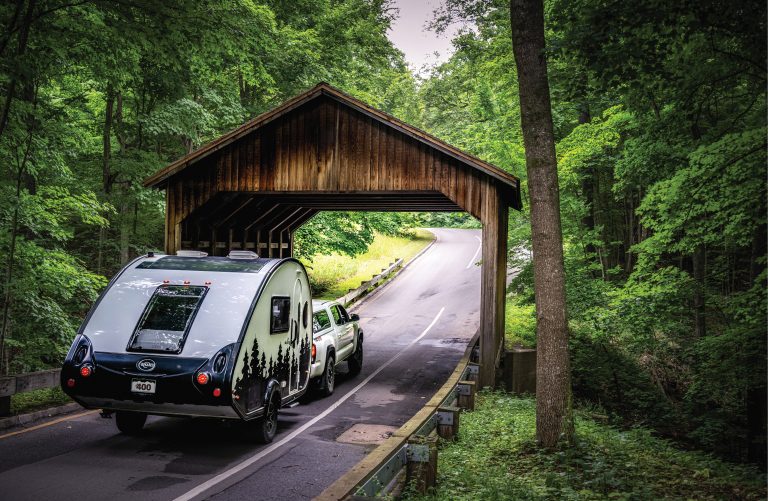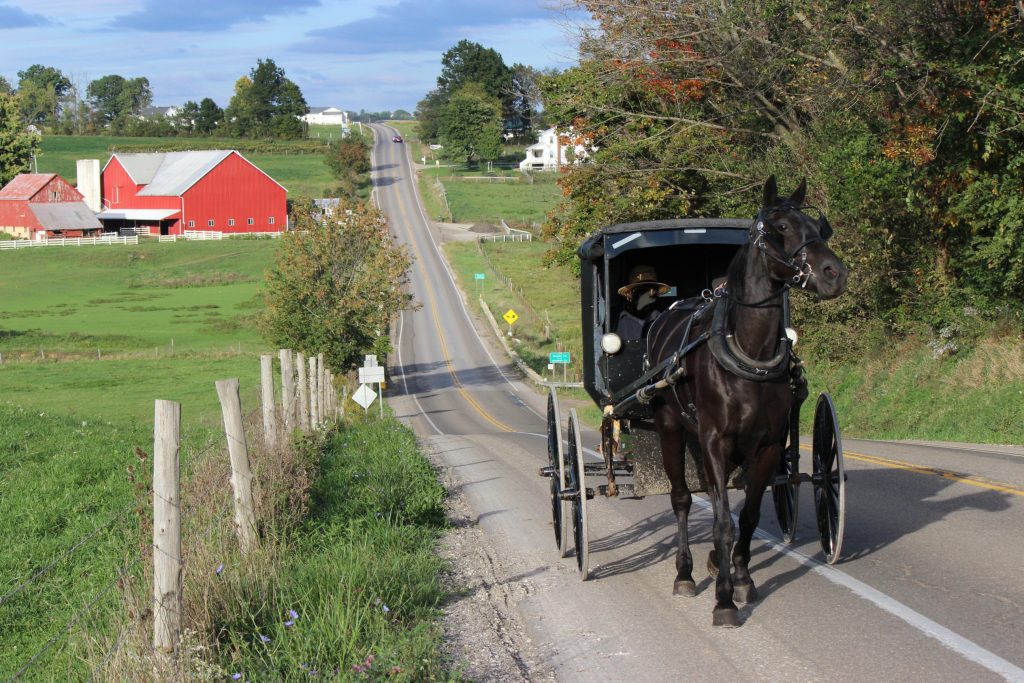I nestled a blanket against the back of the buggy, and rested my head.
Closing my eyes, I listened to the music of the wheels. They clattered loudly on the gravel road. The moving buggy was filled with all sorts of sounds. It creaked and groaned and rattled and hummed. In the other rear seat, facing me, my brother’s soft breathing indicated he’d already fallen asleep. In the front seat, my parents murmured in low tones. Every now and then their conversation was punctured by a squeal of delight from my sister on Mom’s lap.
Outside, the crickets chirped cheerfully, serenading the summer night. Their insistent buzzing, along with the steady clip-clop, clip-clop of the horse, and the singing of the buggy wheels, finally lulled me to sleep.
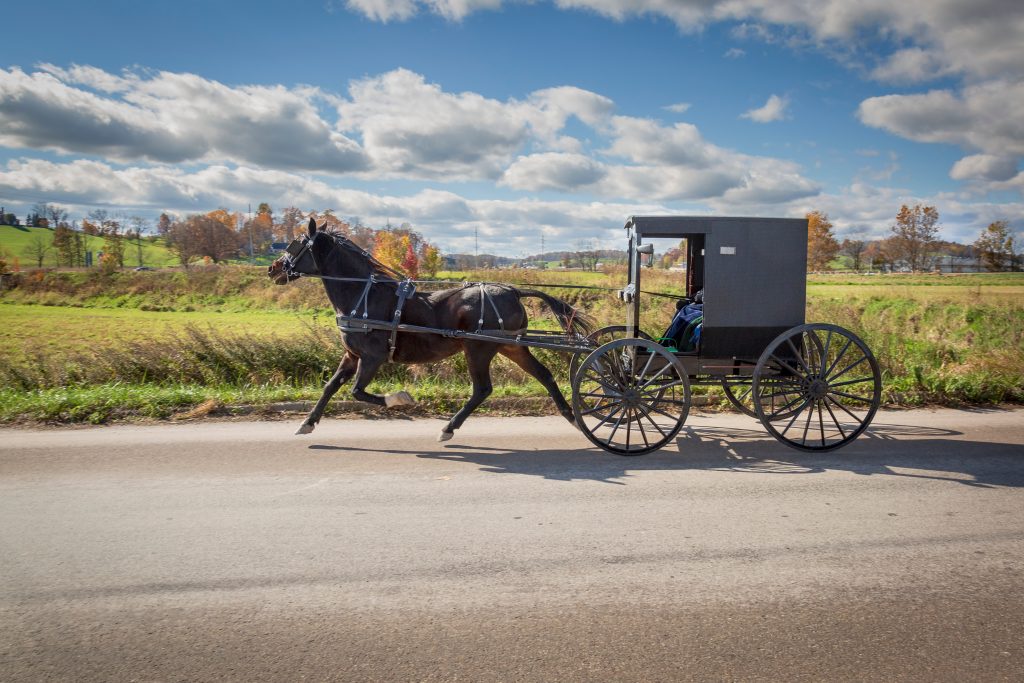
From the eyes of a child
I can’t say for sure that I remember my first buggy ride. Instead, the many rides of my childhood blend together into one. My favorite rides were the trips home from Grandpa’s on a summer night. My grandparents on my mom’s side lived in Farmerstown, about five miles from our farm in Walnut Creek. This made for a perfect, half-hour buggy ride. The road to Grandpa’s was mostly gravel. First, we had to cross two big hills, then the rest of it was mainly flat. Part of it crossed through woods, the rest meandered past multiple Amish farms. We’d see farmers working in the fields, and cows and horses, sheep, and pigs in their outdoor enclosures. A feast for the eyes of a young boy!
On the way home, it would be dark. There is something enchanting about a buggy ride on a summer night. Every sound is amplified. The moon seems to hover just above the road. Every now and then a deer or a raccoon or opossum would dart across the road, illuminated briefly by our dim lights. The chirping of crickets, the croaking of frogs, and the screeching of barn owls brought the wild into our buggy.
For the first several miles, we’d chatter happily about the events of the day. But almost always, as we crossed those last two hills, and the horse would slow to a walk, I would fall asleep. The next thing I would feel was my mom’s arms placing me in my soft bed.

Different modes of transportation
At the southeast corner of our farm sat a small shed, with a rusty tin roof, and two open sides. It had a dirt floor and an abundance of cobwebs. Here is where we parked our buggies.
Sometimes, I would play in the buggy shed. I would climb on the different carriages, pretending I was driving a fine, high-stepping horse.
We had six horse-drawn vehicles parked in the buggy shed. First, there were the two buggies. The older of the two belonged to my grandparents on my dad’s side, who also lived on the farm. The two buggies were very similar. They had a front seat, and then two small seats in the back that faced each other. Entrance into the back was a curtain that was fastened with Velcro and snaps. The curtain had a window in it, so two small boys could peer out and watch the world go by.
From the buggies, I moved over to the surrey. If a buggy is like a car, a surrey is like a van. It has two long seats, one in the front and one in the back, with a side entrance for both. A buggy can seat two children in the back, but a surrey can seat double that. It takes a big, strong horse to pull a surrey load. Sometimes, when we used the surrey, the older children in the back would jump out and walk when we got to a hill, to give the horse a break. If the hill was especially steep, Dad would hand the reins to Mom, jump out as well, and push.
From the surrey, I scrambled onto the road cart. This is the convertible of the buggy world. It is an entirely open, lightweight, two-wheeled cart that is made for two passengers. I sat on it and clucked to my imaginary horse, pretending I was going to town. Dad and I had done that often with this cart, to visit the grocery store. Drinking root beer on the way home was a challenge because one misstep by the horse sent the fizzy soda shooting up my nose.
Sitting beside the road cart was the hack. The hack is the equivalent of a pickup truck. It has a single seat, with a big crate on the back for hauling stuff. My dad would use this carriage to take small animals to the livestock auction in Farmerstown. The crate was perfect for a pig, sheep, or calf.
The last item in the buggy shed was the sleigh. Its runners were sunken into the dirt floor. The sleigh was only used a couple of times each winter, and that was just for fun. We hardly ever used the sleigh for real transportation. But a ride across the fields is the best thrill a snowy day can offer.

Buggy rides as a family
Part of the allure of a horse-drawn vehicle is the horse itself. As I grew up, we went through quite a few. There was Silver, Jerry, Penny, and Sandy. The name of our horse was often one of the first words we children learned to say. The horse was a pet, but once he was in harness he was all business. Horses enjoy pulling buggies. It’s their opportunity to put their speed and muscle to use. A typical horse can go 10-15 miles on a single trip without a problem. Of course, all horses are different. Some are fast, some are slow. Some prance elegantly in the buggy. Others bumble along so awkwardly that the driver pulls his hat down low over his face to avoid being recognized.
I’m a father now, with four children of my own. We use various forms of transportation, from walking to bicycling, to hiring a taxi driver, to hitching up the buggy. But for my children, the excitement is always highest when we go with the buggy. My two oldest boys often are already sitting on the buggy when I push it out of the barn. Then I hitch up the horse and tie him to a post and go inside to get the rest of the family. My little daughter is standing at the window on her tiptoes, watching. “Buggy ride!” She points outside, her eyes shining.
I smile to myself and wonder. When my children are adults, will they reminisce fondly about their childhood buggy rides the way I do now? I hope so. I hope many future generations will have the privilege of continuing to use the most ideal form of transportation for a young family. I hope using the buggy is a way of life that never goes away.
Recent Articles
